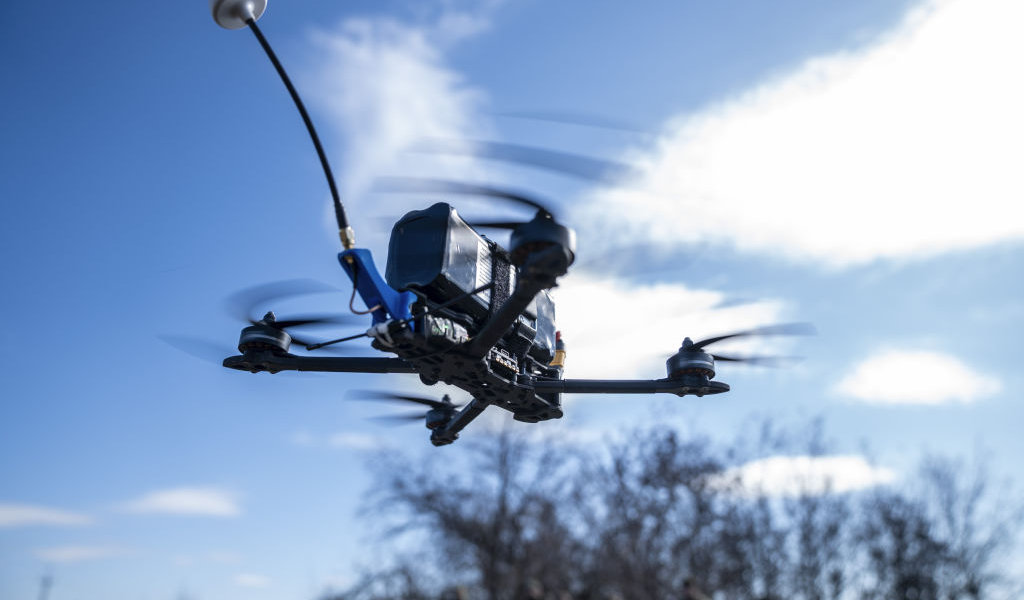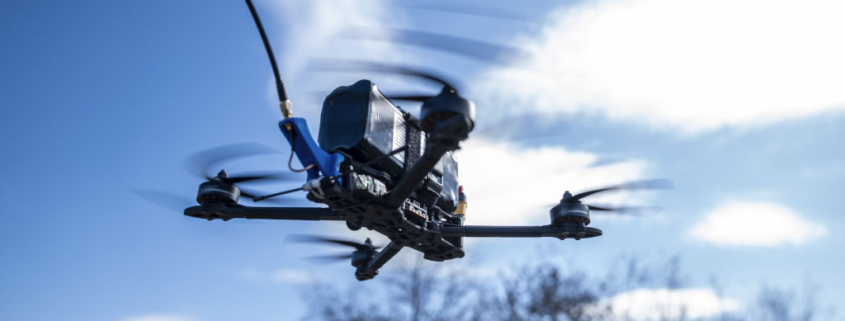Why Ukraine’s AI drones aren’t a breakthrough yet
Despite early hopes, machine vision has not yet become a game-changing feature of Ukraine’s battlefield drones. But its time will come.
The technology, a form of AI, allows drones to identify and strike targets autonomously. They can’t be jammed, aren’t restrained by the length of optical-fibre cables and don’t need continuous monitoring by operators.
But performance has been limited, according to Stacie Pettyjohn, a senior fellow at the Center for a New American Security. The Institute for the Study of War wrote, ‘Promises of an immediate AI … drone revolution are premature as of June 2025.’
Problems include poor camera quality, difficulty hitting moving targets and inconsistent software performance. Ukrainian army units often prefer more reliable alternatives such as optical-fibre drones.
Nonetheless, Ukrainian developers continue refining AI-controlled drones. More than 100 companies in the country are working on such guidance systems. Some are already testing drone swarms, which would overwhelm even strong defences.
‘Swarms of drones are an advanced technology that will allow the military to stay not one, but several steps ahead of the enemy,’ Herman Smetanin, Ukraine’s minister of strategic industries, said last year.
Ukrainian soldiers tell me that AI-targeting struggles in certain terrain, such as hills and forests, and works best on flat, open ground. Cost is also an obstacle.
A drone may have AI for completing an attack in case its operator loses control due to jamming in the space close to the target, called the last mile. But soldier Dmytro of Ukraine’s 413th Separate Battalion of Unmanned Systems says, ‘We rarely see last-mile AI drones on the battlefield because they’re just too expensive right now. Adding advanced chips and extra cameras drives up the cost significantly. I’d rather have three standard drones than one with onboard AI.’
At the outset of the Russo-Ukrainian war, Ukraine relied on off-the-shelf drones controlled by radio links. Civilian drone hobbyists helped with operation, and volunteers trained troops to stream drone footage via Google Meet to watch the battlefield in real time.
These first-person view (FPV) drones could be deployed virtually anywhere and gradually evolved into the centerpiece of battlefield operations. Fighting without drones became unthinkable, and every technical detail began to matter in improving their performance.
As their usage expanded, electronic warfare systems were increasingly jamming their radio links. By mid-2024, Russia had sidestepped that problem with drones that carried a spool of optical fibre through which they sent back their images and received control signals.
Meanwhile, both sides were racing to develop autonomous drones, which, by making their own judgements of what to do, would need neither radio links nor optical fibre. Max Makarchuk, AI lead for defense tech accelerator Brave1, said last year that drone hit rates had dropped to between 30 and 50 percent, and as low as 10 percent for novice pilots. He expected that adding AI could raise accuracy to around 80 percent.
However, setbacks have slowed adoption. Early AI-guided drones performed poorly, disappointing Ukrainian army units that had paid for them. Few wanted to keep paying.
In interviews for this article, managers at AI-drone developer Twist Robotics gave insight into the challenges in developing the technology.
‘Ukraine was the first to widely use small FPV drones with [autonomous] guidance systems. Russia also seems to be developing similar technologies and is preparing to scale their use,’ says chief executive Viktor Sakharchuk.
Since 2022, Twist Robotics has worked on developing AI aimed at bringing autonomous drones to the front line. Sakharchuk says the software needs components for visual navigation, for visual detection and tracking and for trajectory planning. Each component is trained separately.
The firm relies on a mix of real and synthetic data to train visual AI systems, starting with photorealistic simulation and refining in live trials. ‘The simulator developed by our company is also widely used for generating synthetic data,’ he adds.
‘The training process for autonomous drones begins in simulation, where we use Obriy, our in-house developed software with a photorealistic environment. Once the models are trained in simulation, they are fine-tuned on real drones and customised for specific models.’
Rostyslav Olenchyn, an executive director of Twist Robotics, emphasises the importance of autonomous navigation to ensure the drone reaches its target area.
No AI system can be successfully deployed on the battlefield without direct interaction with end users throughout the development process and frontline experience, Sakharchuk says. ‘They all have limitations and application features that are not obvious without training.’
Large-scale use of AI-guided drones by Ukrainian forces began in March 2024, he says. Then interest sharply declined within three months. The producer of this first batch of drones had made and sold them cheaply—attracting orders from some army units. Moreover, it had offered no training. Results were poor.
‘When a large number of low-quality systems hit the market, the military saw that the guidance didn’t work,’ Sakharchuk says. ‘Therefore, interest disappeared.’
Meanwhile, Russia has deployed one-way drones equipped with AI and machine learning, allowing them to identify military vehicles on highways and evade interceptor drones. Recently observed flying in a group of six with distinct wing markings, these drones may be testing swarm coordination. Each carries a 4G telecommunications modem, so they can send pictures back to the ground, fly under operator control, or both.
This article has been amended to adjust the transliterated spelling of the name of Twist Robotics’ Obriy software.


